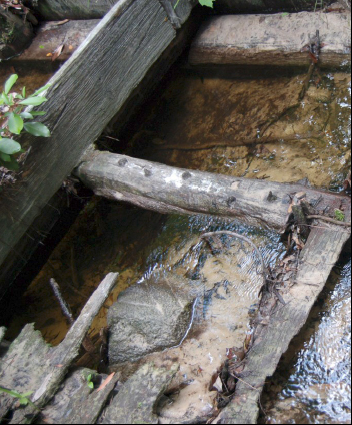
Learn about the Econfina’s rich history and restoration efforts
Econfina Creek has attracted varied cultures and conflicts over the millennia. Five experts will give an overview of the Creek’s rich historical resources during a panel discussion titled, Econfina Creek: Preserving Water Resource History, at Pitt Spring on Friday, Sept. 30, 10-11:30 a.m. central time. The event is hosted by Northwest Florida Water Management District.
A public discussion will follow presentations by Archaeologist Gregory A. Mikell, Florida State University History Professor Andrew Frank, settler descendants Brian Chambless and Faye Matthews, and District Land Manager William O. “Bill” Cleckley. The District, which owns a majority of the creek basin for public water resource protection, will host the program through a $25,000 grant from the Florida Humanities Council (FHC) with funds from the National Endowment for the Humanities (NEH). Pitt Spring is north of Panama City on Highway 20, 7 miles west of U.S. 231.
Mikell will discuss archaeological evidence of Paleoindian, Archaic and Woodland cultures through Early American settlement, Frank will cover Native American and colonial settlement cultures and conflicts, Chambless and Matthews will discuss agriculture, Civil War raids, trade, industry and burial practices and Cleckley will discuss public land acquisition history and natural re-source restoration and preservation efforts by the District. The program will wrap up with Cleckley leading a walking tour of Pitt and Sylvan springs restoration and protection efforts. A kiosk exhibit and driving tour will be unveiled and brochures, maps and study booklets will be distributed. These publications will also be available on the District website, http://www.nwfwmd.state.fl.us/aboutdistrict.html
“This unique event at beautifully restored Pitt Spring, highlights the natural resource importance of Econfina Creek,” said District Executive Director Douglas E. Barr. “We hope it will raise community awareness and support for protecting and preserving Econfina Creek and springs, Bay County’s major drinking water supply.”
“Twenty years ago,” said Cleckley, “we began buying over 41,000 acres of Econfina Creek corridor and adjacent high groundwater recharge area for water supply protection, public access and enjoyment. We hired Mikell to conduct an archaeological reconnaissance survey so that we could protect such important sites as the Gainer family homesteads, the Civil War ruins of Adam’s Mill and several cemeteries, including Mt. Pleasant, Bay County’s first dedicated African American graveyard.”
The District is responsible for protecting and managing water resources in a sustainable manner for the continued welfare of people and natural systems, and depends on the cooperation of citizens in accomplishing these goals. The FHC grant has helped the District create public programs and resources that provide historical perspectives and cultural insights into sustaining these natural resources. Any views, findings, conclusions or recommendations ex-pressed in the program do not necessarily represent those of the FHC or the NEH.
